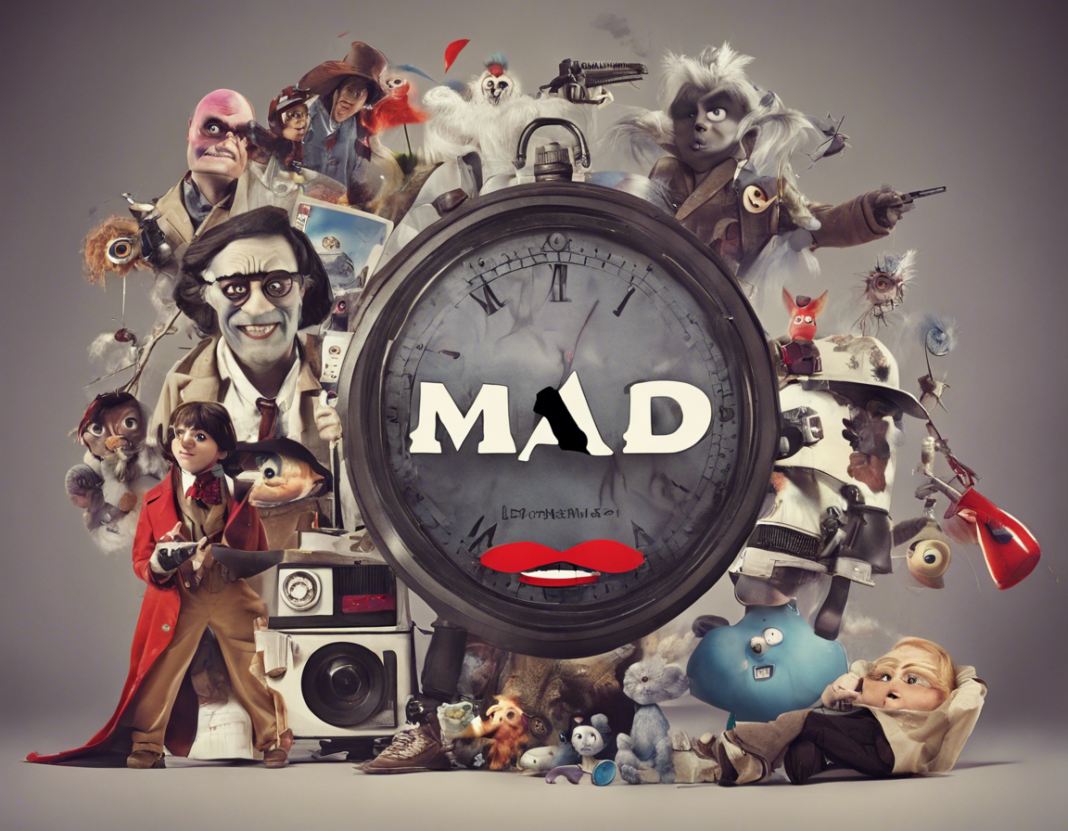With its complex characters, intense emotions, and thought-provoking narratives, Mad films have gained a dedicated following among movie enthusiasts. These films delve deep into the human psyche, exploring themes of madness, obsession, and the blurred lines between reality and illusion. If you are intrigued by the world of Mad films and want to dive into this genre, this comprehensive guide will help you navigate through the intriguing and often mind-bending world of Mad cinema.
Understanding Mad Films
Mad films, also known as psychological thrillers or mind-benders, are a subgenre of cinema that focuses on the psychological aspects of characters and their experiences. These films often feature protagonists who are struggling with their sanity, haunted by their past, or caught up in surreal and often nightmarish situations. Directors of Mad films use various cinematic techniques such as nonlinear narratives, unreliable narrators, and surreal imagery to create an unsettling and immersive viewing experience for the audience.
Characteristics of Mad Films
- Complex Characters: Mad films often feature protagonists who are psychologically complex, with hidden motives and conflicting emotions.
- Twists and Turns: These films are known for their unpredictable plot twists and mind-bending narratives that keep the audience guessing until the very end.
- Atmospheric Settings: Mad films often take place in dark, moody settings that mirror the inner turmoil of the characters.
- Psychological Themes: Themes such as madness, paranoia, identity crisis, and obsession are recurring motifs in Mad films.
- Visual Storytelling: Directors use visual and auditory cues to create a sense of unease and disorientation, drawing the audience into the characters’ turbulent world.
Must-Watch Mad Films
If you are looking to explore the world of Mad cinema, here are some must-watch films that have left a lasting impact on audiences:
-
“Black Swan” (2010) – Directed by Darren Aronofsky, this psychological thriller follows the descent into madness of a ballerina played by Natalie Portman.
-
“Fight Club” (1999) – Directed by David Fincher, this film explores themes of masculinity, consumerism, and identity through its unreliable narrator played by Edward Norton.
-
“Shutter Island” (2010) – Directed by Martin Scorsese, this film stars Leonardo DiCaprio as a U.S. Marshal investigating a psychiatric facility on an isolated island.
-
“Donnie Darko” (2001) – Directed by Richard Kelly, this cult classic follows a troubled teenager played by Jake Gyllenhaal who receives cryptic messages from a giant bunny rabbit.
-
“Mulholland Drive” (2001) – Directed by David Lynch, this surrealist masterpiece blurs the lines between dreams and reality in the story of an amnesiac woman in Los Angeles.
How to Appreciate Mad Films
Watching Mad films can be a unique and captivating experience, but it requires a certain level of engagement and attention to detail. Here are some tips on how to fully appreciate and understand Mad cinema:
-
Pay Attention to Details: Mad films are often filled with clues and subtle hints that can help you unravel the mysteries within the narrative.
-
Engage Critically: Question the motives of the characters, dissect the symbolism, and analyze the hidden meanings behind the visuals and dialogue.
-
Discuss and Debate: Mad films are open to interpretation, so don’t be afraid to share your thoughts and theories with fellow viewers to gain new insights.
-
Explore Similar Films: Once you have started delving into Mad cinema, explore other films in the genre to expand your understanding and appreciation of psychological thrillers.
FAQs
1. What makes a film “Mad”?
Mad films typically involve protagonists who are struggling with their sanity, dealing with psychological trauma, or experiencing surreal and often confusing situations. Themes of madness, paranoia, and obsession are common in these films.
2. Are all Mad films dark and disturbing?
While many Mad films do have dark and disturbing elements, not all films in this genre fall into that category. Some Mad films may have suspenseful or eerie moments without being overwhelmingly dark.
3. How can I differentiate between a Mad film and a horror film?
Mad films focus more on psychological aspects such as the characters’ minds, emotions, and perceptions, whereas horror films tend to rely more on scares, gore, and supernatural elements to create fear and tension.
4. Are Mad films suitable for all audiences?
Mad films often deal with mature themes and may contain intense scenes that could be disturbing or triggering for some viewers. It is advisable to check the content warnings and ratings before watching Mad films.
5. What are some classic Mad films from the early days of cinema?
Classics such as Alfred Hitchcock’s “Psycho” (1960), Roman Polanski’s “Rosemary’s Baby” (1968), and Stanley Kubrick’s “The Shining” (1980) are considered iconic Mad films that have stood the test of time.
Whether you are a seasoned fan of Mad films or a newcomer intrigued by the genre, exploring the twisted and enigmatic world of psychological thrillers can be a riveting and intellectually stimulating journey. So grab some popcorn, dim the lights, and immerse yourself in the gripping narratives and mind-bending visuals of Mad cinema.




